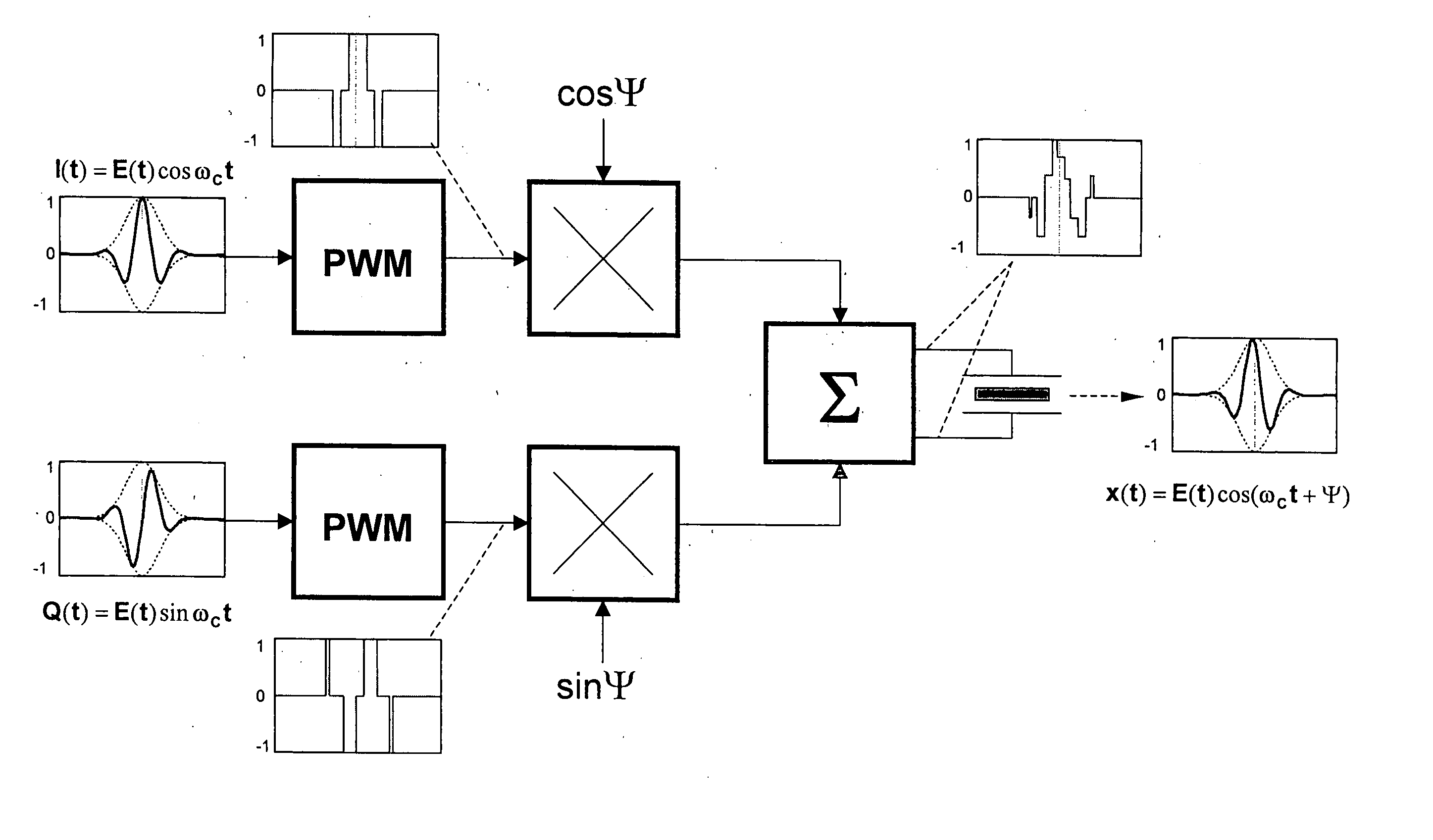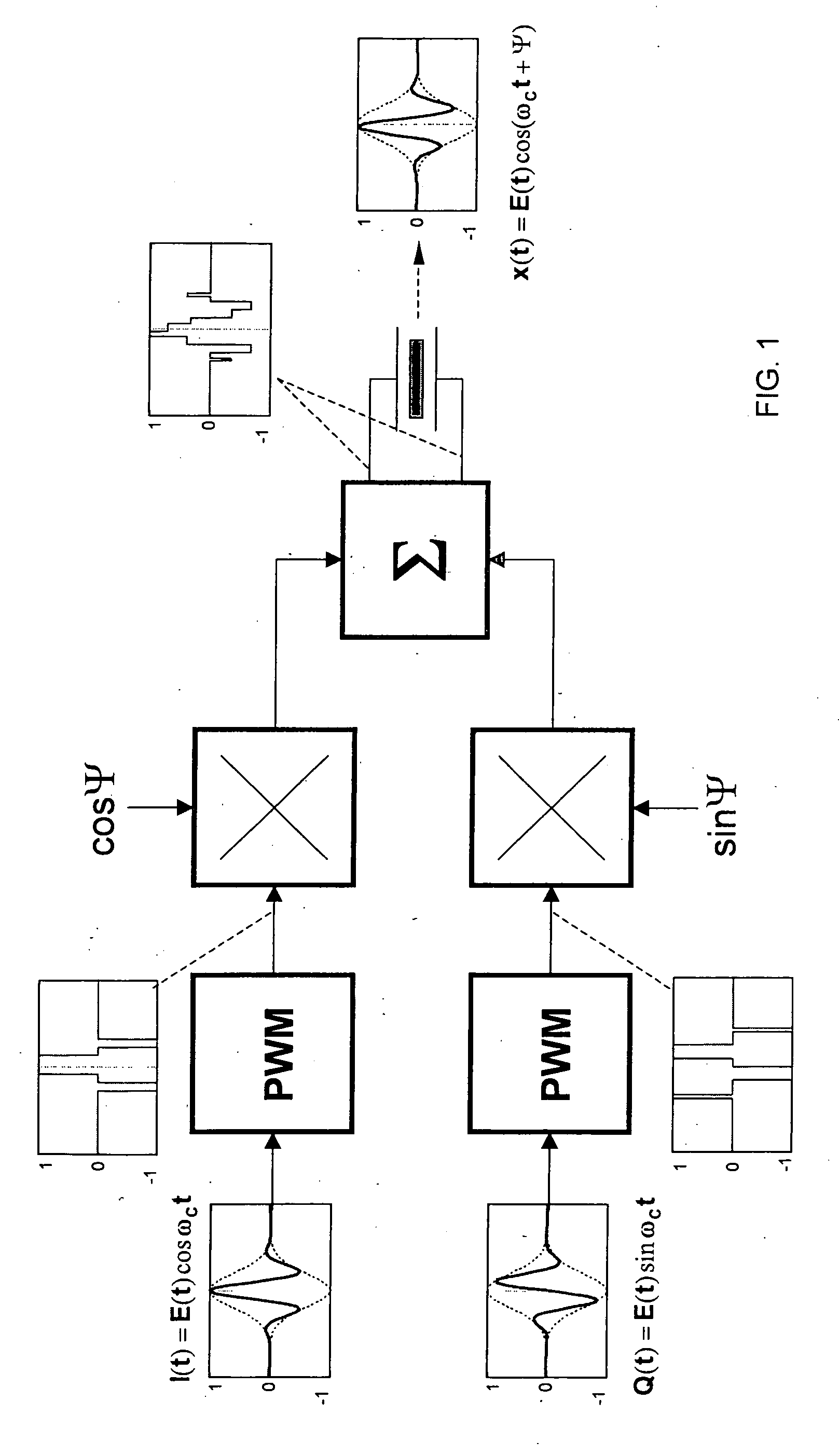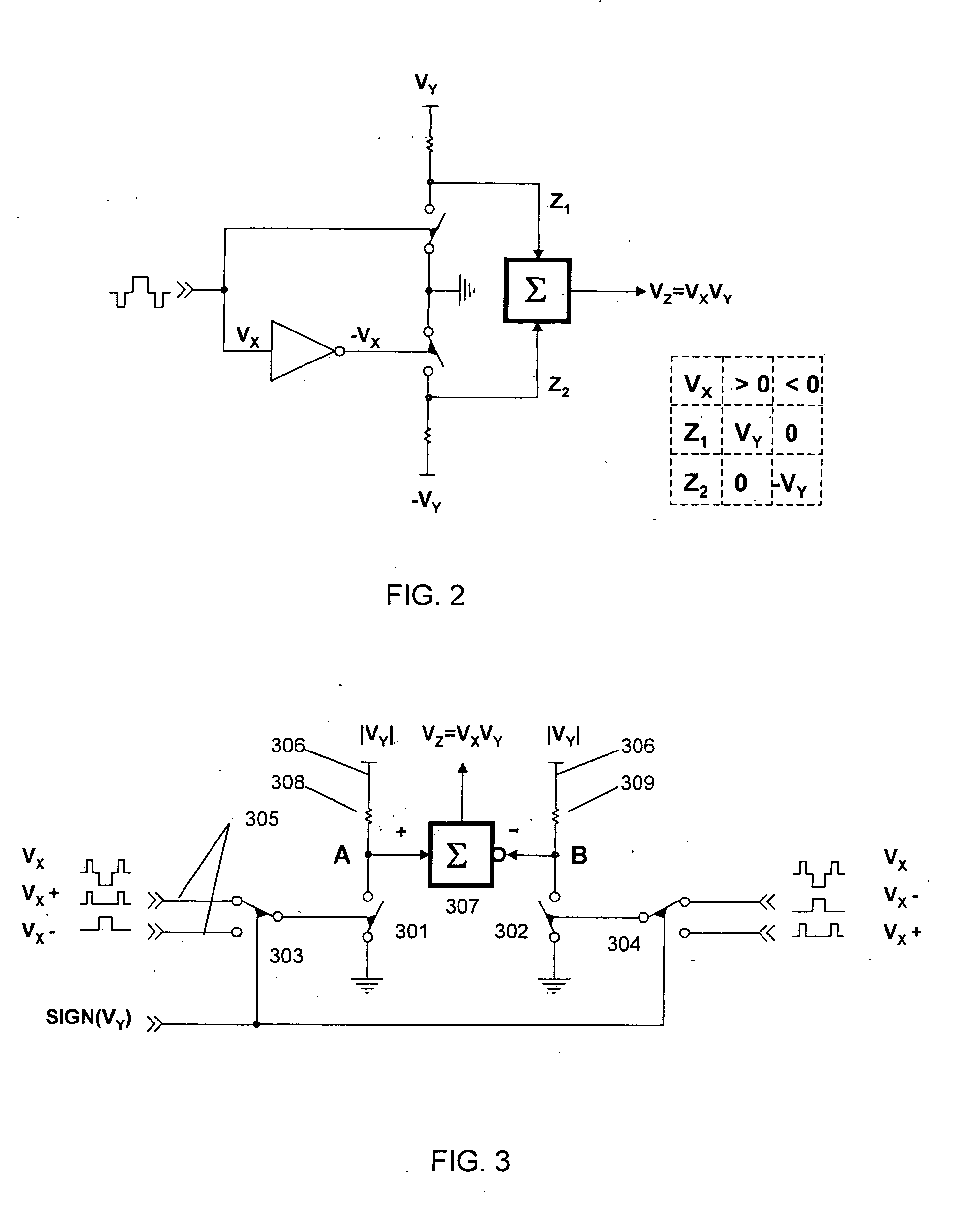Ultrasound transmit beamformer integrated circuit and method
a beamformer and ultrasonic technology, applied in the field of coherent ultrasound imaging systems, can solve the problems of insufficient hardware resources to optimize the characteristics of transmit waveforms, insufficient programmability of carrier frequency characteristics, and insufficient precision of transmit waveforms, so as to achieve the effect of reducing power consumption, reducing the cost of transmission, and maintaining programmability of carrier frequency
- Summary
- Abstract
- Description
- Claims
- Application Information
AI Technical Summary
Benefits of technology
Problems solved by technology
Method used
Image
Examples
second embodiment
Since the gate voltage in FIG. 6 is formed as a product of phase rotating and apodization factors, it may have a wide dynamic range. Consequently, the threshold voltage tolerance of the transistor amplifiers may degrade the accuracy of beamformation. In view of that, the second embodiment shown in FIG. 5 introduces a different architecture.
FIG.5 depicts the second embodiment 500 comprises two identical pulse height and width multipliers 501, 520, a transmit controller 570, and an output multiplier 580. Each of the PHWMs 501 and 520 comprises two identical programmable current drivers 530, 540 and 550, 560. Interface and architecture of these drivers are shown in FIG. 7.
Referring to the PHWM 501, the first and second clock terminals 504, 506 of the first and the second drivers are connected in reverse. These terminals are fed by the PWM pulse train as discussed previously.
Switching inputs 508 of the first and second drivers 530, 540 are controlled by the polarity node 514. Refer...
PUM
 Login to View More
Login to View More Abstract
Description
Claims
Application Information
 Login to View More
Login to View More - R&D
- Intellectual Property
- Life Sciences
- Materials
- Tech Scout
- Unparalleled Data Quality
- Higher Quality Content
- 60% Fewer Hallucinations
Browse by: Latest US Patents, China's latest patents, Technical Efficacy Thesaurus, Application Domain, Technology Topic, Popular Technical Reports.
© 2025 PatSnap. All rights reserved.Legal|Privacy policy|Modern Slavery Act Transparency Statement|Sitemap|About US| Contact US: help@patsnap.com



